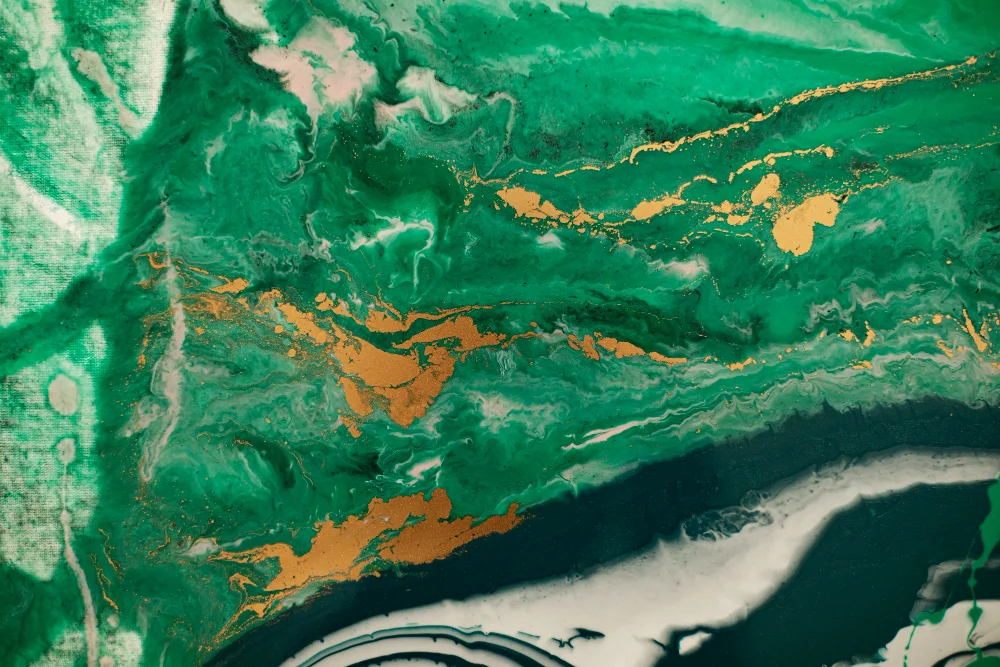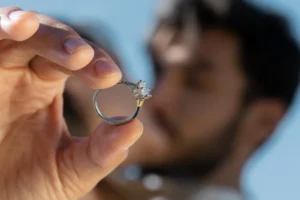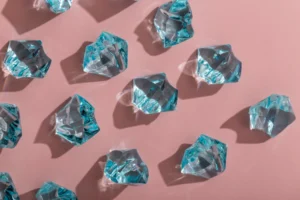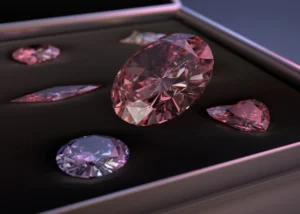Have you ever bought a striking green stone, only to wonder later: “Did I just pay for plastic?”
That was me in a bustling Istanbul market three summers ago. I was drawn to a mesmerising swirl of greens on a pendant labelled “authentic malachite.” It cost less than a meal—and looked too good to be true. Spoiler: it was.
Since then, I’ve spoken with gemologists, experimented with tests at home, and even cracked a few fakes to see what’s inside. Whether you’re a collector, jeweller, or simply want to avoid being scammed, this guide will help you identify real malachite with confidence.
What Is Malachite?
Malachite is a copper carbonate mineral known for its vivid green banding and silky lustre. It’s been used for centuries in jewellery, sculpture, and even eyeshadow in ancient Egypt. Genuine malachite is relatively soft (Mohs hardness 3.5–4), making it easier to carve—but also easier to fake.
Why Are Fake Malachites So Common?
Malachite’s unique aesthetic and rising popularity make it a prime target for counterfeiters.
Common materials used to imitate malachite include:
- Plastic or resin: Often moulded and painted with artificial swirls.
- Dyed howlite or jasper: Cheaper stones dyed green and patterned.
- Reconstituted malachite: Real malachite ground into powder and fused with resin, giving it a Frankenstein-like origin.
Real malachite isn’t cheap—and good fakes are visually convincing. That’s why it’s crucial to learn what sets authentic pieces apart.
How to Tell If Malachite Is Real: 9 Reliable Tests
1. Look at the Banding
Authentic malachite displays natural, irregular banding—no two pieces are alike. The bands should range from light to dark green in a fluid, non-repetitive pattern.
What to check:
- Are the lines too perfect or uniform? That’s likely a fake.
- Do colours appear flat or printed on? Watch out.
“Malachite’s beauty lies in its organic chaos,” says Laura Bishop, a UK-based gem appraiser. “If it looks computer-generated, it probably is.”
2. Feel the Weight
Malachite is denser than plastic or resin.
Try this:
Hold a real malachite piece in one hand and a suspected fake in the other. The genuine one should feel noticeably heavier.
3. Check the Temperature
Real malachite stays cool to the touch, like marble or glass.
Tip: Place the stone on your cheek. If it warms up instantly, it’s likely plastic.
4. Look at the Surface Texture
Under magnification, genuine malachite shows fine fibrous structures or tiny mineral grains.
Fake ones often have bubbles (if resin) or a too-smooth surface.
5. The Acetone Test (Use with Caution)
Acetone can dissolve painted dyes used in fakes.
How to do it: Dab a cotton swab with acetone on a hidden part. If green comes off, it’s probably dyed.
Warning: This can damage the stone if misused. Only test unimportant or sacrificial samples.
6. Scratch Test (Not Recommended for Valuables)
Malachite can be scratched by steel. Fake ones made from hard glass may resist.
Better alternative: Use a Mohs hardness kit if you have one.
7. Ask for Certification
Reputable dealers offer authenticity certificates.
If you’re buying online or from a shop, ask: “Can you provide a gem lab certification?” If not, walk away.
8. UV Light Test
Some malachite substitutes fluoresce under UV light—real malachite doesn’t.
9. X-Ray Diffraction or Spectroscopy (For High-Value Items)
These lab tests offer definitive results but can be costly. Only worth it for investment pieces.
Personal Experience: Real vs. Fake Side-by-Side
Last year, I bought two seemingly identical malachite bracelets from a Moroccan bazaar—one for £30, the other for £9.
The cheaper one:
- Had overly shiny, plasticky polish
- Felt feather-light
- Lost colour after acetone testing
The pricier one:
- Had imperfect but fluid bands
- Stayed cold even after sitting in my hand
- Passed acetone and scratch tests
Lesson? Trust your senses—and don’t expect high-end minerals at bargain prices.
Where to Buy Authentic Malachite
To avoid fakes, buy from trusted sources:
- Established jewellery houses (e.g. Monica Vinader, Tiffany & Co.)
- Gem shows with GIA-certified vendors
- Specialist mineral shops with transparent sourcing
- Online sellers with strong reviews and refund guarantees
Read Also: Rhodonite vs Rhodochrosite: A Gemstone Face-Off Rooted in Beauty and Healing
FAQs
Q: Is real malachite expensive?
A: Yes. High-quality malachite can range from £50 to several hundred pounds depending on size and craftsmanship.
Q: Can fake malachite still be used in jewellery?
A: Absolutely, but it should be disclosed honestly as synthetic or imitation.
Q: Does malachite have healing properties?
A: It’s often associated with transformation and protection in metaphysical circles, though not scientifically proven.
Q: Is malachite safe to wear?
A: Yes—when polished and set. However, raw malachite contains copper and should not be inhaled or ingested.
Final Thoughts & Takeaway
Malachite’s hypnotic swirls are hard to resist—but so are the counterfeits. By training your eyes and senses, and using a few smart tests, you’ll be better equipped to make wise gemstone choices.
Your turn: Have you ever been sold a fake stone? What tests worked for you? Drop your experience in the comments—I’d love to learn from fellow gem lovers.
This guide was written by a gem enthusiast with real-world experience and vetted by professional sources. Always consult certified gemologists when in doubt.




